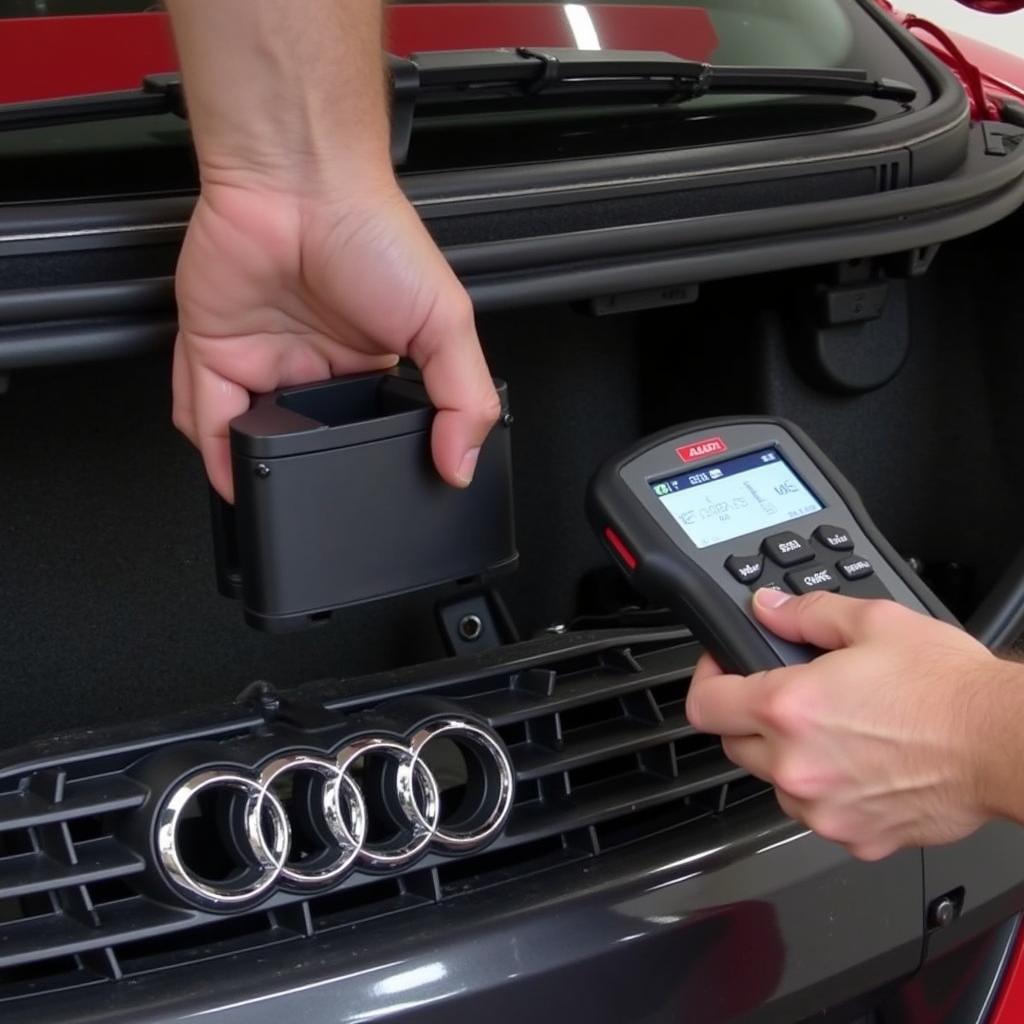Your cart is currently empty!

Decoding Your Audi TT MK1: A Comprehensive Guide to Code Readers
Finding the right Audi TT MK1 code reader can feel like navigating a maze. Whether you’re a seasoned mechanic or a DIY enthusiast, understanding how to interpret those cryptic codes is crucial for keeping your MK1 in top shape. This guide will walk you through everything you need to know about using an Audi TT MK1 code reader, from selecting the right tool to diagnosing and fixing common issues.
Choosing the Right Audi TT MK1 Code Reader
The market is flooded with various code readers, ranging from basic OBD-II scanners to sophisticated professional diagnostic tools. So, which one is right for your Audi TT MK1? Consider your technical skills, budget, and the depth of diagnostic information you need. A basic code reader will suffice for reading and clearing simple codes, while more advanced scanners provide live data, access to module-specific information, and even coding capabilities. For the MK1, a reader that supports the ISO9141-2 protocol is essential.
Basic OBD-II Scanners
These are affordable and readily available. They can read and clear generic powertrain codes (P-codes). However, they might not access all the modules in your TT MK1, potentially missing crucial information.
Advanced Scan Tools
These offer a more comprehensive approach. They can access all the control modules in your MK1, including ABS, airbag, and climate control, giving you a complete picture of your car’s health. Many advanced scan tools also allow you to view live data streams, which are invaluable for real-time diagnostics. Some even have coding capabilities, enabling you to customize certain features of your car.
 Audi TT MK1 OBD2 Connector Location
Audi TT MK1 OBD2 Connector Location
Understanding Diagnostic Trouble Codes (DTCs)
Once you’ve connected your code reader, you’ll likely encounter a series of alphanumeric codes. These are Diagnostic Trouble Codes (DTCs), which are standardized codes that represent specific faults within your vehicle’s systems. Understanding these codes is the key to successful diagnosis and repair. Each code has a specific meaning related to a particular system or component.
Decoding the Code
A typical DTC has five characters. The first character indicates the system related to the code, such as P for powertrain, B for body, C for chassis, and U for network communication. The following digits further pinpoint the specific problem.
 Audi TT MK1 Code Reader Displaying DTCs
Audi TT MK1 Code Reader Displaying DTCs
Common Audi TT MK1 Trouble Codes and Their Fixes
Certain DTCs are more prevalent in the Audi TT MK1 than others. Here are a few examples:
-
P0171 and P0174: These codes often indicate a lean fuel mixture. Potential causes could be a vacuum leak, faulty oxygen sensor, or a malfunctioning mass airflow sensor.
-
P0420: This suggests a problem with the catalytic converter. A faulty oxygen sensor or a damaged catalytic converter could be the culprit.
-
P0300, P0301, P0302, etc.: These are misfire codes. Spark plugs, ignition coils, or fuel injectors could be the source of the problem.
Why accurate diagnosis is essential
Accurate diagnosis is crucial for preventing unnecessary repairs. Throwing parts at a problem without understanding the underlying cause can be expensive and time-consuming. A systematic approach using a code reader and consulting reliable resources is the most efficient way to fix your TT MK1.
Tips for Using an Audi TT MK1 Code Reader
Here are a few essential tips to ensure you get the most out of your code reader:
-
Locate the OBD-II port: It’s usually located under the dashboard on the driver’s side.
-
Turn the ignition to the “on” position: This powers the code reader without starting the engine.
-
Connect the code reader: Plug it firmly into the OBD-II port.
-
Follow the on-screen prompts: Each code reader has its own interface, so refer to the manual for specific instructions.
-
Record the codes: Write down all the DTCs displayed before clearing them. This information can be invaluable for future diagnostics.
 Mechanic Using a Code Reader on an Audi TT MK1
Mechanic Using a Code Reader on an Audi TT MK1
Conclusion
Using an Audi TT MK1 code reader empowers you to maintain and repair your vehicle effectively. From selecting the right scanner to understanding and resolving DTCs, this guide provides a comprehensive framework for diagnosing and fixing common issues. Remember, accurate diagnosis is the key to efficient repairs. If you encounter any complex issues, don’t hesitate to seek professional help. Contact us at VCDSTool at +1 (641) 206-8880 and our email address: vcdstool@gmail.com or visit our office at 6719 W 70th Ave, Arvada, CO 80003, USA. We’re here to help you keep your Audi TT MK1 running smoothly.
by
Tags:
Leave a Reply